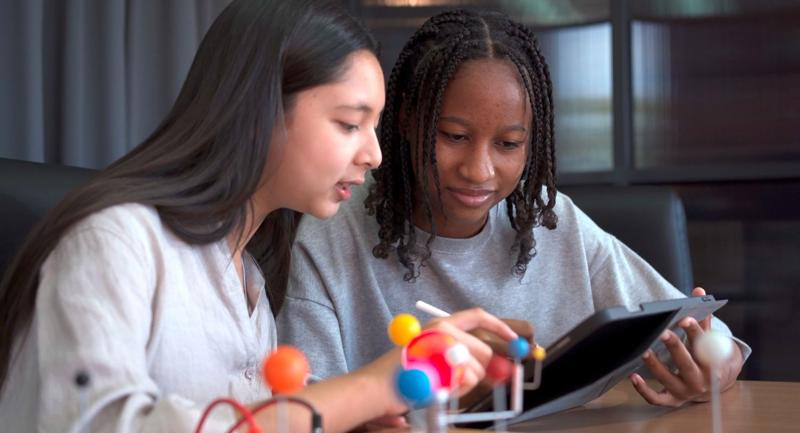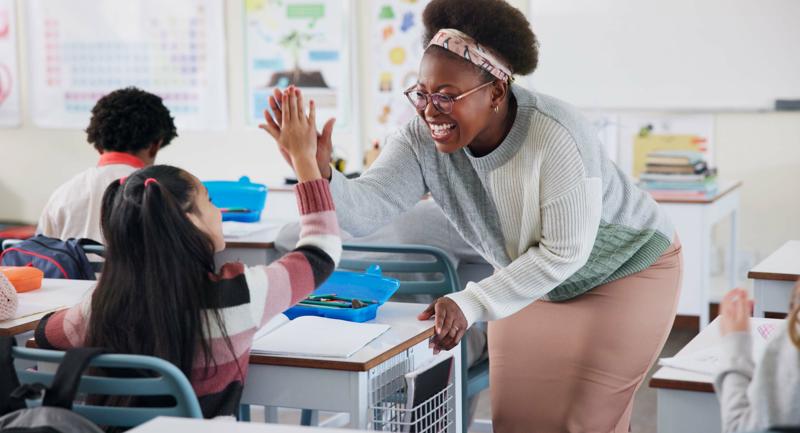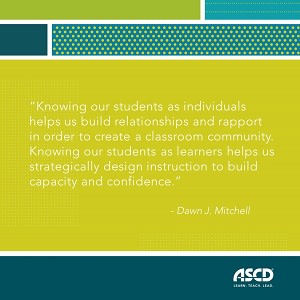Everybody needs a coach. Coaching is commonly thought about in terms of sports, however, coaching in the education setting has the ability to inspire, impact change, support, push thinking and be the cheerleader everyone needs. Sometimes, though, it is difficult for educators to recognize a personal need for a coach. It takes the right person with the right character traits to be able to support teachers and help them be successful.
Although some may say that coaching can only occur from a specific role focused on improving teacher’s instruction and student learning, coaching can actually occur from a variety of different roles in schools. Teacher leaders, team leaders, interventionists, PBIS/SEL leaders, administrators, and veteran teachers all have the ability to be a coach, if that skill is cultivated. So how can anyone, from a variety of roles, help educators realize the impact of coaching and begin to start the conversation? Here are 7 qualities that any educators should reflect on in order to determine if they possess the ability to be a strong coach.
1. Building Relationships
Building relationships in instructional coaching is the most integral part that must be in place, to ensure success in any coaching model. In order for teachers to trust a coach and be open to coaching, they need to have a relationship built on trust and respect. A coaching relationship is the same as any other relationship. There needs to be room for communication, expression of concerns and fears, and the ability to show your vulnerabilities to impact teaching and learning. The relationship between coach and teacher needs to be protected and nurtured.
2. Student Focused
Students are the heart and soul of what we do in education. It is important to remember that while data is important in informing instruction and decisions, staying focused on students is the ultimate goal. Effective coaching involves coaches and teachers working together in student focused conversations targeted at what student needs. These conversations keep the end goal in mind for students and determine a process for where students need to go and how we are going to get that child there.
3. Data Informed Decisions
Data informed decisions are a powerful tool, if we use it to truly adapt our instruction. Being a coach requires one to be able to see the data, analyze the data, and then take that next step of answering the question of “so what”. In the role of a coach, one has to be able to take a birds eye view to gain perspective and ask “what can we change about our instruction in order to better impact student learning.” When we support teachers in shifting from being data driven or knowledgable about data to being truly data informed, student learning increases. This helps turn coaching conversations to a safe place where it’s about impacting student learning versus an attack against a teacher.
4. Questioning Without Judgement
The simple act of questioning has the power to force change while other techniques do not have the same impact. By asking questions, coaches are able to maintain the teacher-coach relationship. Coaches must be able to ask questions that require educators to think. Sometimes these questions can be simple ones that require reflection and rationale to be given. Other times, these questions may be more poignant and require an educator to pause and recognize a change is needed to instruction and practice. Questions of this type are almost always the most powerful in impacting instruction. But, it is important that these questions are asked without judgement. Questions should not be asked for the sake of questions themselves but for the purpose of ensuring student learning is the goal.
5. Knowledge of High Impact Instructional Practices:
Teachers can be provided with all of the resources and materials they may need in the classroom, they can have small teacher to student ratios, or numerous educators in the room, but if the best instructional strategies and techniques are not incorporated, there will be little growth. Coaches need to know what high impact strategies are out there. They also need to be able to recognize them in action in the classroom. Finally, they need to be able to give specific ideas as to how a teacher can begin to better implement those practices in their classroom. This includes modeling practices, observing and reflecting, planning together with teachers, and coteaching together with a classroom teacher to ensure accurate use of those strategies while ensuring that the strategy transfers over to success with students..
6. Taking Risks
Taking Risks involves trying something new, which takes us out of our comfort zone, at times. It is not easy to move away from what one is used to doing and implement something new. However, the students we instruct come to us with different needs, interests, goals, and learning styles each year. This requires us to learn about our students and be willing to try new ideas, attempt a strategy in a different way, and be vulnerable in seeing how that impacts student learning. Sometimes as a coach, we need to model being the risk taker, first, and having success before teachers are willing to take the leap, with us, out of their comfort zone. This occurs by the coach being willing to try it first in their classroom, modeling that idea with teachers, planning it for them and working with them to ensure it occurs, and presenting concepts and ideas to staff.
7. Staying Current on Best Practices
Possessing a strong knowledge base of the current best practices and trends in education, allows coaching supports to remain student focused. As educators, we encounter students with various learning styles and needs. We need to meet each student’s needs through a variety of instructional practices. What works for one student may not necessarily work for another. Coaches possess a toolbox of instructional practices to support teaching and learning and they know when to use each tool to make the best impact on students and their learning. If you are looking to become stronger in your knowledge of instructional practices, get on twitter! Participate in Twitter Chats. Follow authors and organizations such as @ASCD to learn about hot topics and concepts that are the focus in education right now.
So, after reading this article, you may be saying “Hey, I have some of these qualities. What can I do in my role to begin coaching?” First of all, start small. Begin by talking with your team of teachers about their instructional practices. Research new ideas and suggest ways to improve instructional strategies that are occurring in a colleague’s room. Host after school professional development sessions where teachers can attend and learn about a new strategy on a volunteer basis. Initiate a book study in your school revolving around a strategic goal or need that you find in your building. Read up on high impact strategies and start to follow other instructional coaches on twitter and their blogs. One thing is for sure, everyone does need a coach because we are all in need of refinement of our practices. Just remember to stay student focused and build relationships. This lays the foundation for the trust that is needed between teachers and coaches, with the ultimate goal of improving student learning.







